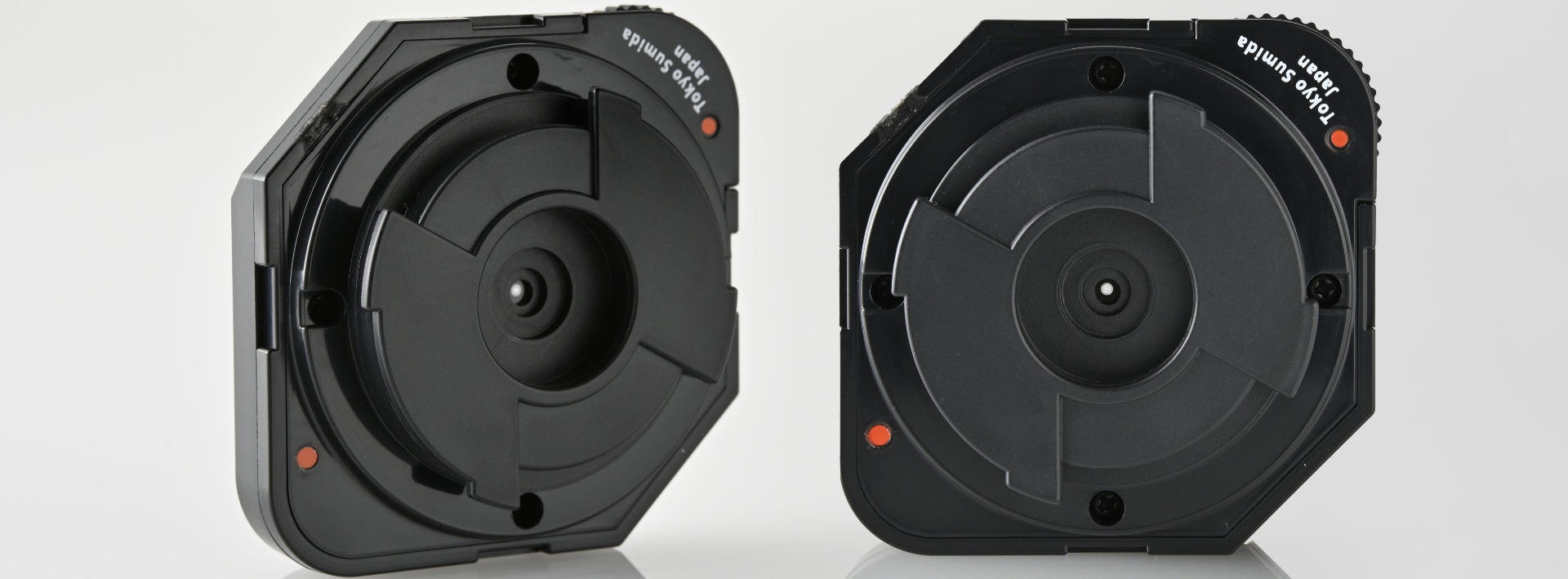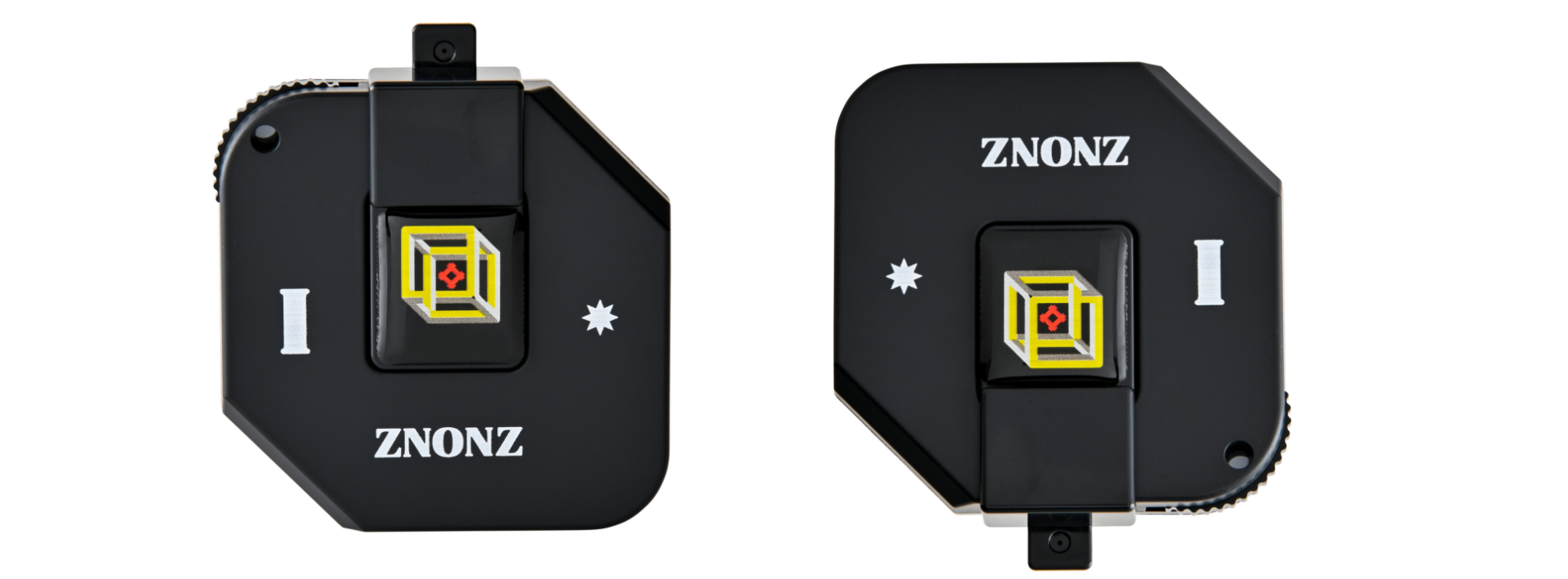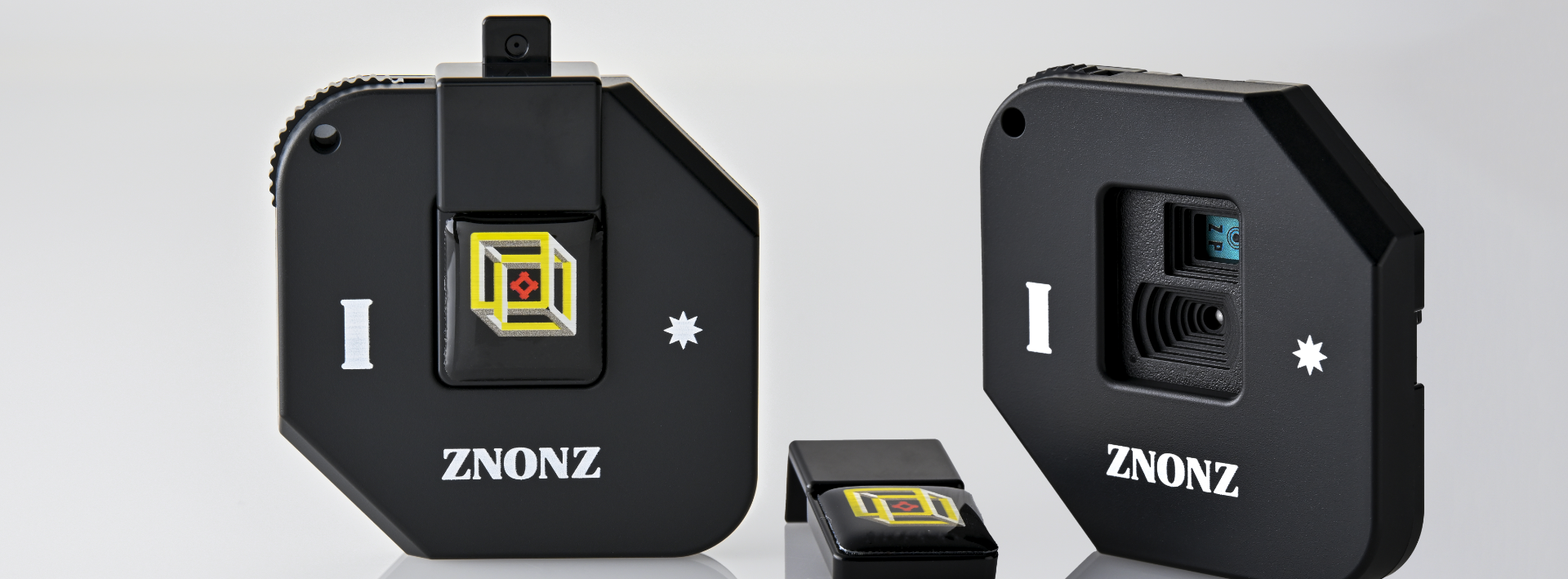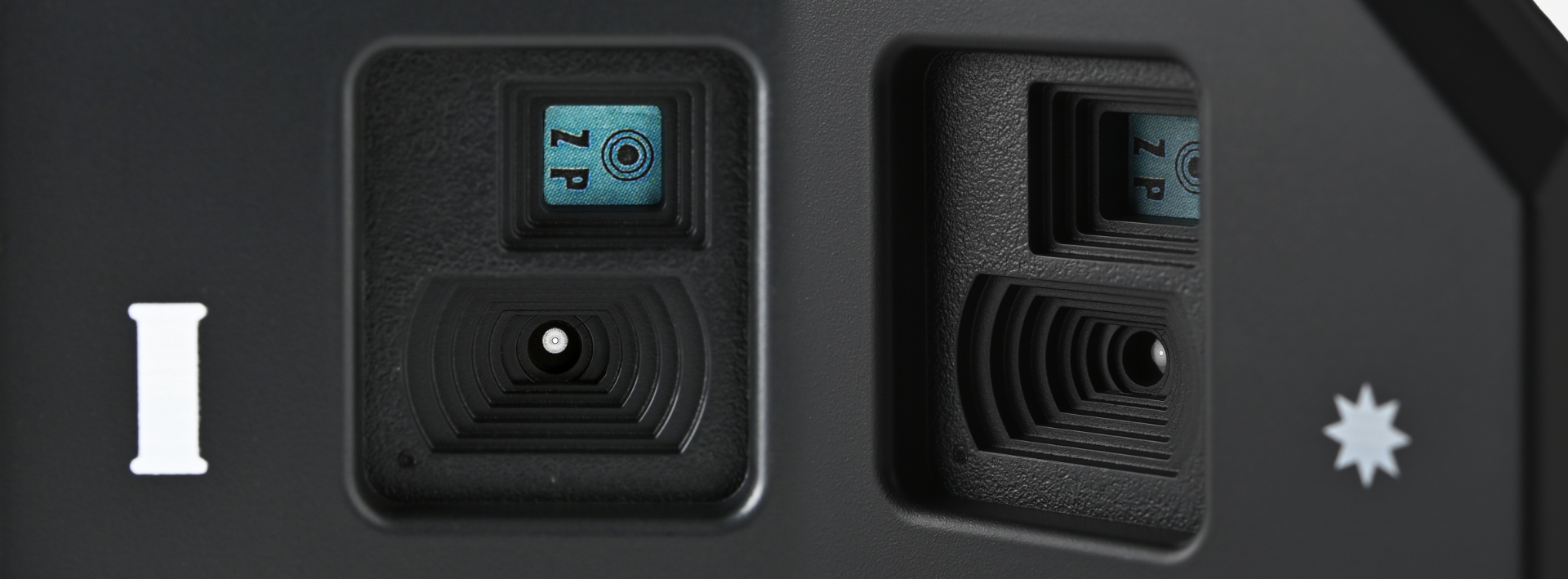Starting out with two product lines

ZNONZ I, which can be attached to mirrorless digital cameras and features four types of lens-less optical elements in a single turret, was launched immediately after the establishment of the company.
Lens-less optical elements (non-lens optical elements)

Pinhole Zone plate Photon sieves Square Zone Plate
A lens is a mechanism that uses refraction at the boundary between air and glass to form an image. However, light has many other properties besides refraction, and these can also be employed to produce images.
The first method is pinhole photography which utilizes the property of straightness, and the second is zone plate photography, which uses diffraction.
We have developed commercial products by using these optical elements as well as photon sieves and others derived from these, and integrated them into turret mechanisms.
First of all, pinhole photography is a type of photography in which many rays of light among those flying randomly through space pass through a pinhole, reach a photoreceptor, and are formed into an image.
Therefore, since pinhole photography has no concept of focus, it results in a unique image in which both distant and nearby scenery are blurred to the same degree. And because even a large image circle can be set, large photoreceptors can also be accommodated.
Next is zone plate photography, which uses a zone plate, an optical element that exploits the diffraction effect of light to form an image. Zone plates are widely used for DVD and CD pickups, but attempts to use them for photography are a very recent development.
Zone plate photography results in chromatic aberration. The effect is negligible when using a single laser wavelength as a light source, as is the case with pickups, but when zone plates are used for general photography, the image is recorded as a collection of chromatic aberrations because they are dealing with light rays of various wavelengths, which are innumerable in the natural world. At first glance, this makes the image look out-of-focus, but in fact, for each wavelength, the resolution is much better than that of pinhole photography.
Photon sieve photography generates flares and can produce softer images than pinhole photography. As with zone plate photography, there is a sharp image in the core of the blurred area.
Square zone plate photography generates flares and can produce softer images than pinhole photography. A closer look reveals a sharp image in the core, as is also seen with photon sieve photography. Also, beams of light appear horizontally and vertically as would be seen with use of a cross filter for a positional light source.
With this image as a canvas, the customer can choose either to try to eliminate the chromatic aberration by editing the image on their PC or to actively take advantage of the unique compound chromatic aberration for artistic expression.
Leica M-compatible mount

The ZNONZ I is designed to be used with a wide variety of cameras, including mirrorless digital cameras and film cameras, so it employs a Leica M-compatible mount.
This mount, adopted for the Leica M3, which went on sale in 1959, was a groundbreaking invention that featured numerous new mechanisms cementing the M3’s reputation. It also had a tremendous influence on the subsequent development of 35mm cameras.
Its mechanism was so precise and complete that rival camera manufacturers around the world had no room left to develop rangefinder models that would not infringe its patent, so were forced to give up on the idea of competing with it and instead focus on the development of SLRs.
Even though the patent expired after more than 60 years since its launch, the mechanism continues to be respected by many people as the de facto standard in the camera world. And among the many mounts available, including for SLRs, there are more compatible adapters on the market for the M mount than for others.
That being the situation, the ZNONZ I uses a Leica M-compatible mount. And this means that the ZNONZ I can be used with a wide range of models if one of the mount adapters offered by many other companies is used.
Selector dial positioned for easy operability

When the user holds the camera so that they are looking through the viewfinder, the dial for selecting the turret on the ZNONZ I can either be positioned at the upper right and operated with the index or middle finger of the right hand, or at the lower left and operated with the thumb of the left hand.
To make both these positions possible, the ZNONZ I was equipped with a Leica M-compatible mount and designed so that it could also be mounted upside down, taking advantage of the mount’s four tabs.
In addition, the ZNONZ logo is legible in either mounting position. Please use it in the position that feels most comfortable for you.
Appearance of ZNONZ I

The exterior of the ZNONZ I is a deformed hexagonal shape. When viewed from the front, it looks like a square with the upper right and lower left corners chopped off. These corners are missing so as to secure the field of view when used with optical rangefinder cameras such as the Leica M series. The two opposed corners have been removed because the ZNONZ I can be mounted upside down. This absence of the corners ensures that the field of view is not obstructed in either mounting position.
This is the reason for its distinctive deformed hexagonal shape. It is a useful feature for digital cameras with optical viewfinders such as the Fujifilm X-Pro series.
Equivalent focal length of ZNONZ I

Since the ZNONZ I employs a Leica M-compatible mount, 29.2 mm, which is in the vicinity of its flange focal length of 27.8 mm, is used as the equivalent focal length. Zone plates that use diffraction, for example, are designed with this focal length. With pinhole photography, there is no concept of focal length, but the design provides an angle of view more or less in accordance with this concept.
In addition, for Leica M4-P, M6, and other optical viewfinder models that support a 28mm frame, the mount is set up so that the 28mm frame is displayed when the ZNONZ I is attached.
